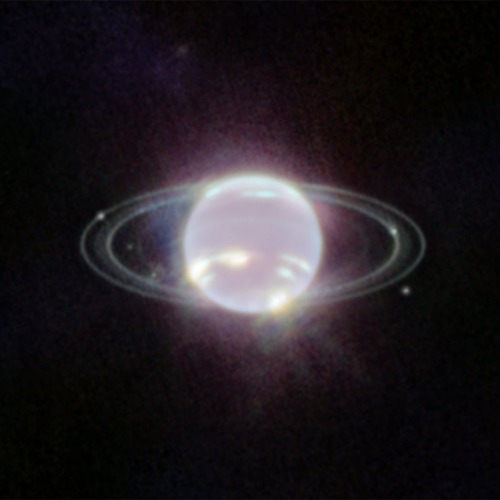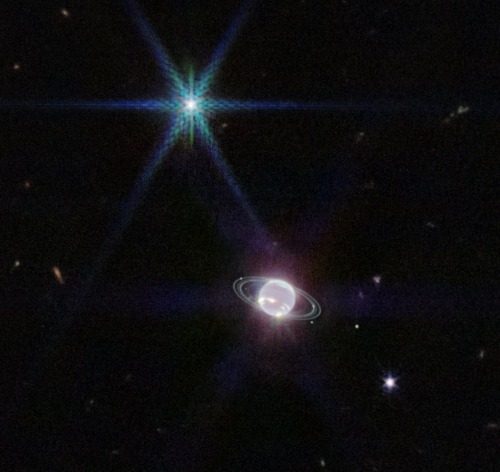Happy Earth Day Everyone!




Happy Earth Day everyone!
Planet X came to join the party with a topic on earth like planets! Source: http://www.mnn.com/earth-matters/space/photos/10-nasa-images-of-planets-like-earth/more-discoveries-to-come#top-desktop
More Posts from Night-hides-the-world and Others

The glow of ionized hydrogen in the Flame Nebula, in Orions belt, by Adam Block
js
This shows the development of imagery we have for nebulae!
A universe in motion seen from the International Space Station during a night pass over Earth.
(@ wonderofscience on Twitter)
Timelapse created from images courtesy of the Earth Science and Remote Sensing Unit, NASA Johnson Space Center(ISS061-E-110520-111341 eol.jsc.nasa.gov).


NASA released the clearest images of Neptune’s rings in over 30 years.

Making a Spectacle of Star Formation in Orion
Looking like a pair of eyeglasses only a rock star would wear, this nebula brings into focus a murky region of star formation. NASA’s Spitzer Space Telescope exposes the depths of this dusty nebula with its infrared vision, showing stellar infants that are lost behind dark clouds when viewed in visible light.
Best known as Messier 78, the two round greenish nebulae are actually cavities carved out of the surrounding dark dust clouds. The extended dust is mostly dark, even to Spitzer’s view, but the edges show up in mid-wavelength infrared light as glowing, red frames surrounding the bright interiors. Messier 78 is easily seen in small telescopes in the constellation of Orion, just to the northeast of Orion’s belt, but looks strikingly different, with dominant, dark swaths of dust. Spitzer’s infrared eyes penetrate this dust, revealing the glowing interior of the nebulae.
Credit: NASA/JPL/Spitzer








Starry Greetings!
Here is a comic on Asteroids!
https://www.space.com/51-asteroids-formation-discovery-and-exploration.html
Spaceships Don’t Go to the Moon Until They’ve Gone Through Ohio
From the South, to the Midwest, to infinity and beyond. The Orion spacecraft for Artemis I has several stops to make before heading out into the expanse, and it can’t go to the Moon until it stops in Ohio. It landed at the Mansfield Lahm Regional Airport on Nov. 24, and then it was transferred to Plum Brook Station where it will undergo a series of environmental tests over the next four months to make sure it’s ready for space. Here are the highlights of its journey so far.

It’s a bird? It’s a whale? It’s the Super Guppy!
The 40-degree-and-extremely-windy weather couldn’t stop the massive crowd at Mansfield from waiting hours to see the Super Guppy land. Families huddled together as they waited, some decked out in NASA gear, including one astronaut costume complete with a helmet. Despite the delays, about 1,500 people held out to watch the bulbous airplane touch down.

Buckle up. It’s time for an extremely safe ride.
After Orion safely made it to Ohio, the next step was transporting it 41 miles to Plum Brook Station. It was loaded onto a massive truck to make the trip, and the drive lasted several hours as it slowly maneuvered the rural route to the facility. The 130-foot, 38-wheel truck hit a peak speed of about 20 miles per hour. It was the largest load ever driven through the state, and more than 700 utility lines were raised or moved in preparation to let the vehicle pass.

Calling us clean freaks would be an understatement.
Any person who even thinks about breathing near Orion has to be suited up. We’re talking “bunny” suit, shoe covers, beard covers, hoods, latex gloves – the works. One of our top priorities is keeping Orion clean during testing to prevent contaminants from sticking to the vehicle’s surface. These substances could cause issues for the capsule during testing and, more importantly, later during its flight around the Moon.

And liftoff of Orion… via crane.
On the ceiling of the Space Environments Complex at Plum Brook Station is a colossal crane used to move large pieces of space hardware into position for testing. It’s an important tool during pretest work, as it is used to lift Orion from the “verticator”—the name we use for the massive contraption used to rotate the vehicle from its laying down position into an upright testing orientation. After liftoff from the verticator, technicians then used the crane to install the spacecraft inside the Heat Flux System for testing.

It’s really not tin foil.
Although it looks like tin foil, the metallic material wrapped around Orion and the Heat Flux System—the bird cage-looking hardware encapsulating the spacecraft—is a material called Mylar. It’s used as a thermal barrier to help control which areas of the spacecraft get heated or cooled during testing. This helps our team avoid wasting energy heating and cooling spots unnecessarily.
Bake at 300° for 63 days.
It took a little over a week to prep Orion for its thermal test in the vacuum chamber. Now begins the 63-day process of heating and cooling (ranging from -250° to 300° Fahrenheit) the capsule to ensure it’s ready to withstand the journey around the Moon and back.
View more images of Orion’s transportation and preparation here.
Make sure to follow us on Tumblr for your regular dose of space: http://nasa.tumblr.com.
This page has a great selection of free wallpapers from these adorable artists!
Space is scary wallpaper is now available!

Show your love for the darkness of space by using this wallpaper for your desktop!
You can download it on the main website:
https://www.cosmicfunnies.com/freebies/
Scroll down the wallpaper section and you should be able to see it.
Enjoy!

Saturn's moonlet Prometheus sends ripples through the F ring by the force of its gravity in this series of 9 shots.
Credit: NASA
-
 sillyclodshoecolor liked this · 5 years ago
sillyclodshoecolor liked this · 5 years ago -
 homosexual-panacakes liked this · 6 years ago
homosexual-panacakes liked this · 6 years ago -
 jerryb058-blog liked this · 6 years ago
jerryb058-blog liked this · 6 years ago -
 irdkatall liked this · 6 years ago
irdkatall liked this · 6 years ago -
 fukai-the-demon-king reblogged this · 6 years ago
fukai-the-demon-king reblogged this · 6 years ago -
 razorsreign reblogged this · 6 years ago
razorsreign reblogged this · 6 years ago -
 flairenragebelmont reblogged this · 6 years ago
flairenragebelmont reblogged this · 6 years ago -
 flairenragebelmont liked this · 6 years ago
flairenragebelmont liked this · 6 years ago -
 biggzzwazhere reblogged this · 6 years ago
biggzzwazhere reblogged this · 6 years ago -
 biggzzwazhere liked this · 6 years ago
biggzzwazhere liked this · 6 years ago -
 daddyspretttybabydoll liked this · 6 years ago
daddyspretttybabydoll liked this · 6 years ago -
 nickisgirl reblogged this · 6 years ago
nickisgirl reblogged this · 6 years ago -
 nickisgirl liked this · 6 years ago
nickisgirl liked this · 6 years ago -
 innominandum liked this · 6 years ago
innominandum liked this · 6 years ago -
 random-empress reblogged this · 6 years ago
random-empress reblogged this · 6 years ago -
 capujieso-blog liked this · 6 years ago
capujieso-blog liked this · 6 years ago -
 100th-clone-of-atlas liked this · 6 years ago
100th-clone-of-atlas liked this · 6 years ago -
 tipikappa liked this · 6 years ago
tipikappa liked this · 6 years ago -
 harmonicgamingangel22blog liked this · 6 years ago
harmonicgamingangel22blog liked this · 6 years ago -
 pitayyaaa liked this · 6 years ago
pitayyaaa liked this · 6 years ago -
 kritik-am-leben liked this · 6 years ago
kritik-am-leben liked this · 6 years ago -
 noisymuffin liked this · 6 years ago
noisymuffin liked this · 6 years ago -
 bucky-butt reblogged this · 6 years ago
bucky-butt reblogged this · 6 years ago -
 brndnelli0ttmrtn liked this · 6 years ago
brndnelli0ttmrtn liked this · 6 years ago -
 insaneaboutyoutubers liked this · 6 years ago
insaneaboutyoutubers liked this · 6 years ago -
 idksomethinggeneric liked this · 6 years ago
idksomethinggeneric liked this · 6 years ago -
 liquid-pie liked this · 6 years ago
liquid-pie liked this · 6 years ago -
 atlas-the-worldbuilder liked this · 6 years ago
atlas-the-worldbuilder liked this · 6 years ago -
 jpspooky-blog liked this · 6 years ago
jpspooky-blog liked this · 6 years ago -
 loveazepam liked this · 6 years ago
loveazepam liked this · 6 years ago -
 thedapperbandit reblogged this · 6 years ago
thedapperbandit reblogged this · 6 years ago -
 insanemoonfish liked this · 6 years ago
insanemoonfish liked this · 6 years ago -
 bunnigardens liked this · 6 years ago
bunnigardens liked this · 6 years ago -
 teolorenzo liked this · 6 years ago
teolorenzo liked this · 6 years ago -
 5lxxxl reblogged this · 6 years ago
5lxxxl reblogged this · 6 years ago -
 5lxxxl liked this · 6 years ago
5lxxxl liked this · 6 years ago
Astronomy and the other wonders you witness when you look to the skies.
115 posts
